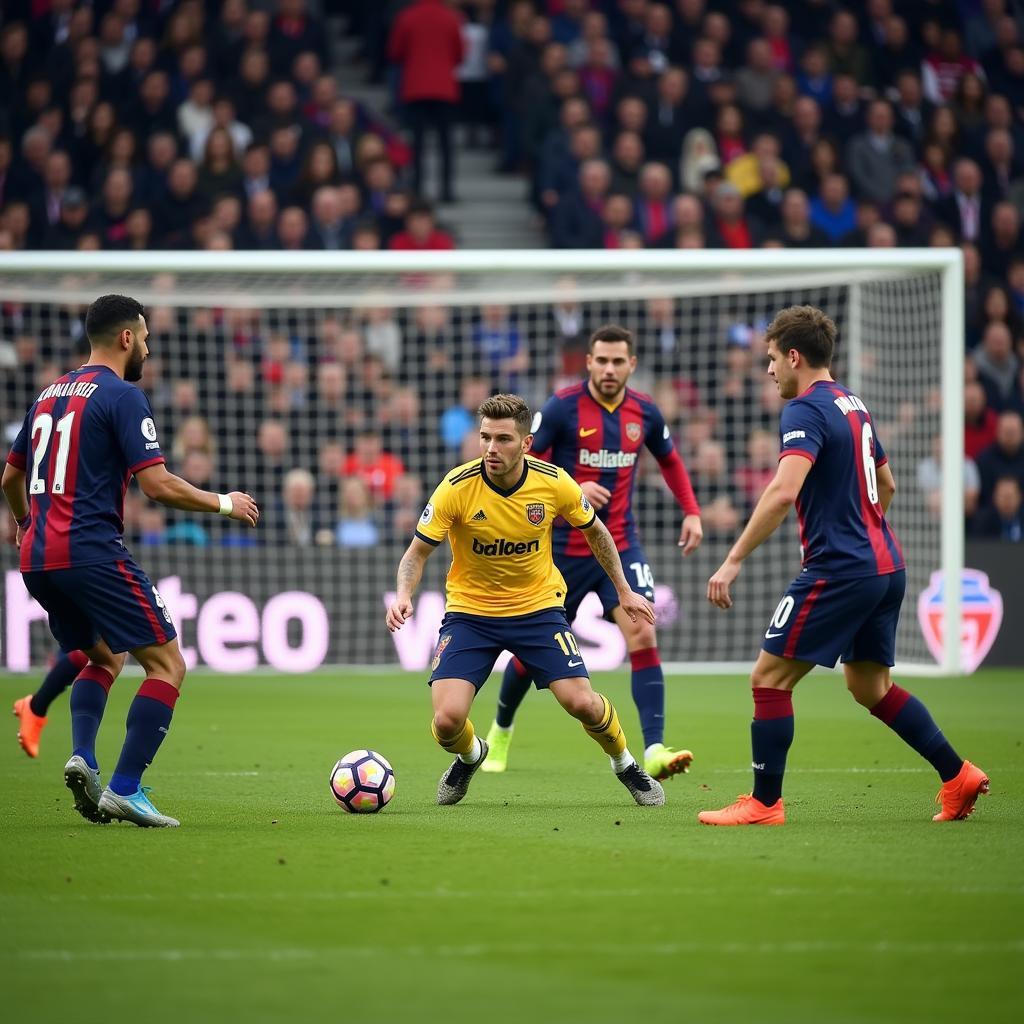Clinical Finishers: Unpacking the Mystique of Football’s “Fox in the Box”
October 17, 2024They are the players who live for the moment the net ripples. The “fox in the box,” the “clinical finisher,” the “goal poacher” – these are just a few of the colorful terms used to describe football’s deadliest strikers. These are the players who might not be the flashiest on the pitch, but they possess an uncanny ability to sniff out goalscoring opportunities and dispatch them with ruthless efficiency.
 Example of a Clinical Finisher
Example of a Clinical Finisher
What sets these players apart? Is it raw talent, meticulous training, or an almost instinctive understanding of the game? The answer, as with most things in football, is a complex blend of all these factors.
The Anatomy of a Goal Scorer
Clinical finishers often share certain key attributes:
- Positioning: They have an innate sense of where to be to get on the end of crosses, through balls, and deflections. They seem to anticipate the play a split-second before everyone else, finding those pockets of space in the box that defenders struggle to cover.
- Composure: The penalty area is a pressure cooker. Clinical finishers thrive in this environment. They don’t panic when a chance falls to them. They take a moment, make the right decision, whether it’s a powerful drive, a delicate chip, or even a simple tap-in.
- Technique: This doesn’t necessarily mean they’re the most skillful dribblers or possess the flashiest tricks. But they hone a repertoire of shots: volleys, half-volleys, headers, and can adjust their body shape in an instant to get the most accurate strike.
- Mentality: Great goalscorers have an insatiable hunger for goals. They’re never satisfied, always striving for more. They have the mental fortitude to bounce back from misses and the confidence to believe the next chance will come.
Nurturing Talent: The Making of a Clinical Finisher
While some aspects of finishing are undoubtedly innate, a lot of it comes down to dedicated practice. Young players who show promise in front of goal often undergo specialized training regimes:
- Repetitive drills: Practicing the same shots, over and over, from different angles and distances, ingrains the muscle memory needed to react instinctively in a match situation.
- Video analysis: Studying their own performances, as well as those of the greats, allows them to analyze their movement, decision-making, and identify areas for improvement.
- Tactical awareness: Understanding different attacking patterns, off-the-ball movement, and how to exploit space is crucial for getting into goalscoring positions in the first place.
 Goalscorer Training
Goalscorer Training
More Than Just Goals
While their primary currency is goals, it’s important to remember that modern football demands more from its strikers:
- Link-up Play: The ability to hold up the ball, bring teammates into play, and contribute to the build-up is highly valued.
- Defensive Work Rate: Pressing from the front, closing down defenders, and tracking back are now expected as part of a holistic approach.
The best clinical finishers in the world today combine their predatory instincts with a well-rounded skillset, making them invaluable assets to their teams.
Conclusion
Clinical finishing is an art form. It’s the ability to remain calm amidst chaos, to make the difference when it matters most. While natural talent plays a part, it’s the dedication, the countless hours of practice, and the unwavering belief in their ability that truly sets these players apart. They are the ones who turn losses into draws and draws into victories, etching their names into footballing history one goal at a time.
FAQs
1. Who are some examples of current players known for their clinical finishing?
Some of the best examples include Harry Kane, Robert Lewandowski, and Kylian Mbappé.
2. Is finishing something you can learn, or are some players just born with it?
It’s a combination of both. Natural talent helps, but dedicated training and practice are essential to develop the technique, composure, and mental strength required.
3. What are some common mistakes young players make when it comes to finishing?
Often, young players panic when they get into scoring positions. They rush their shots or try to be too powerful instead of focusing on accuracy and placement.
Need help analyzing your game or developing your skills? Contact us! Phone: 0396443476, Email: [email protected], or visit us at 23 Tháng 3, Đắk Nia, Gia Nghĩa, Đắk Nông, Việt Nam. We have a 24/7 customer support team ready to assist you.